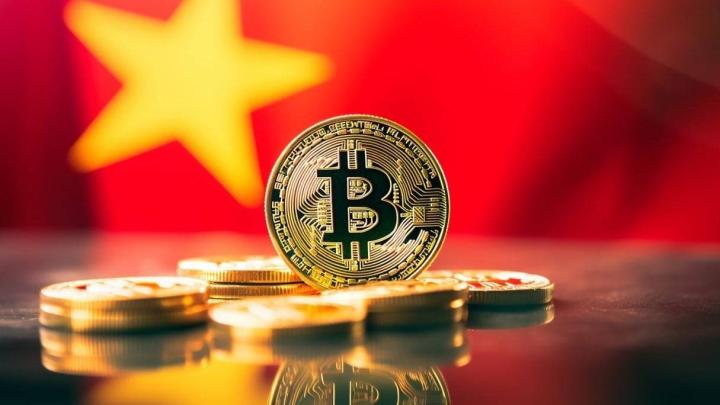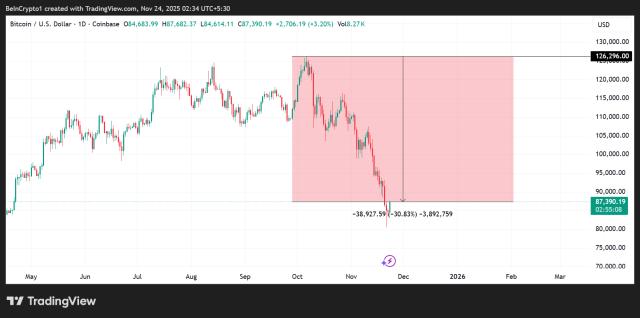Author: Maryland HODL; Crypto KOL; Translated by: Jinse Finance
A power struggle involving money is unfolding in full view of everyone—but almost no one is aware of the stakes involved. Here is my personal speculation.
Over the past few months, a new pattern has emerged in the political, market, and media spheres. Scattered news headlines are suddenly connecting, market anomalies no longer seem so accidental, and institutional behavior is exhibiting unusually aggressive behavior. Beneath the surface, a deeper transformation appears to be lurking.
This is not a normal monetary cycle.
This is not a partisan conflict in the traditional sense.
This is not "market volatility".
What we are witnessing now is a direct confrontation between two competing monetary systems:
The old order...centered around JPMorgan Chase, Wall Street, and the Federal Reserve.
The new order... centers on government bonds, stablecoins, and a digital architecture based on Bitcoin.
This conflict is no longer just talk; it's real and escalating. For the first time in decades, it has come into the public eye.
The following is an attempt to see the real battlefield... a battlefield that most analysts cannot see because they are still applying a 1970-2010 framework to a world that is breaking free from its own constraints.
I. JPMorgan Chase Steps Out of the Shadow
Most people think of JPMorgan Chase as a bank. This is incorrect.
JPMorgan Chase is the operations arm of a global financial institution… It is the entity closest to the core mechanisms of the Federal Reserve, influencing global dollar settlements and acting as a major executor of the traditional monetary system .
Therefore, when Trump released information about Epstein's network of connections and specifically named JPMorgan Chase (rather than viewing individuals in isolation), it was not a rhetorical exaggeration. He dragged deeply entrenched institutions within the system into this media storm.
at the same time:
JPMorgan Chase is a major driver of the aggressive short of Strategy (“MSTR”), at a time when Bitcoin’s macro narrative is threatening the interests of traditional currencies.
Clients attempting to transfer MSTR shares out of JPMorgan Chase have reported settlement delays, suggesting potential stress on the custody system…a stress that only occurs when internal systems become overwhelmed. https://x.com/EMPD_BTC/status/1991886467694776531?s=20
JPMorgan Chase occupies a central position in the Federal Reserve's strategic system, both structurally and politically. Weakening its position is tantamount to weakening the old monetary system itself.
None of this is normal.
It's all part of the same story.
II. The government quietly shifts its focus: returning monetary policy power to the Ministry of Finance.
The media is keen on diverting attention with culture warfare, while the real strategic agenda is money.
This administration is quietly working to bring the center of currency issuance back to the U.S. Treasury... Specific methods include:
Stablecoins integrated with government bonds
Programmable settlement track
Bitcoin reserves as long-term collateral
This adjustment will not make any changes to the existing system.
It replaced the system's core power center.
Currently, the Federal Reserve and commercial banks (led by JPMorgan Chase) virtually monopolize the issuance and circulation of all US dollars. If government bonds and stablecoins become the main channels for issuance and settlement, the banking system will lose its authority, profits, and control.
JPMorgan Chase understands this.
They fully understand what stablecoins mean.
They understand what would happen if the Treasury became the issuer of programmable dollars.
So they don't rely on press releases, but on marketing strategies to counter it:
Derivatives pressure,
Liquidity bottleneck
Narrative suppression
Custody delays,
And political influence.
This is not a policy dispute.
This is a struggle for survival.
III. Bitcoin: An Unexpected Battlefield
Bitcoin is not the target... it's the battlefield.
The US government wants to conduct a low-key, strategic buildup before explicitly moving towards a digital settlement system based on national debt. Announcing it prematurely would trigger a gamma squeeze, causing Bitcoin prices to surge and making the buildup prohibitively expensive.
question?
The old system used a suppression mechanism similar to that used in gold trading to suppress Bitcoin signals:
Paper-based derivative products are rampant.
Large-scale synthetic short positions,
Cognitive warfare
Key technical levels experienced liquidity shocks.
The major brokerage firms' custody bottleneck.
JPMorgan Chase has spent decades mastering these technologies in the gold industry. Now, they are applying these technologies to Bitcoin.
It's not because Bitcoin directly threatens bank profits... but because Bitcoin strengthens the Treasury's future monetary system and weakens the Federal Reserve's monetary system.
The government faces a harsh strategic choice:
Let JPMorgan Chase continue to suppress Bitcoin, thereby preserving the ability to accumulate Bitcoin at low prices.
The strategic statement triggered a price surge in Bitcoin, but the covert advantage was lost before a political alliance was formed.
This is why governments remain silent on Bitcoin.
It's not because they don't understand, but because they understand it too thoroughly.
Fourth, both sides are fighting on a fragile foundation.
This struggle takes place over a monetary system that has been built up over sixty years:
Financialization
Structural leverage
Artificially suppressed interest rates
Asset-first growth model
Reserve concentration
And institutional cartelization.
Historical correlations have broken down everywhere because the entire system is no longer in sync. Traditional financial experts who see this as a normal cycle have failed to realize that the cycle itself is crumbling.
The regime is crumbling.
The water pipe system is unstable.
The two sides disagreed on their incentive mechanisms.
Both the traditional order at JPMorgan Chase and the emerging order at the Treasury Department are vying for dominance on the same fragile infrastructure. Any miscalculation could trigger a chain reaction of turmoil.
That's why these movements look so strange, so disjointed, and so crazy.
V. MSTR: The conversion bridge was directly attacked.
Now we'll introduce a crucial aspect that most commentators overlook.
MicroStrategy is more than just a company that holds Bitcoin.
It has become a bridge between the conversion mechanism—traditional institutional capital and the emerging Bitcoin Treasury monetary architecture.
MSTR's structure, leveraged Bitcoin strategies, and preferred stock products effectively convert fiat currency, credit, and government bond assets into long-term Bitcoin exposure. In this way, MSTR has effectively become a convenient pathway for institutional and retail investors to enter the Bitcoin market who cannot (or do not want) directly hold spot Bitcoin but need to escape the artificially suppressed yields of YCC.
This means:
If the government envisions a future where Treasury-backed digital dollars and Bitcoin reserves can coexist, then MSTR is a key corporate channel to enable this transition.
JPMorgan Chase understands this as well.
So when JPMorgan Chase:
It is conducive to large-scale short.
This caused delivery delays.
This puts pressure on MSTR's liquidity.
And fuel negative market sentiment,
This is not just an attack on Michael Sayler.
It attacks the transformation bridges that enable the government's long-term accumulation strategy.
There's even a plausible hypothesis (though currently speculative, it's becoming increasingly logical) that the US government will eventually intervene and make a strategic investment in MSTR. This echoes a recent suggestion by @joshmandell6:
To acquire ownership of MSTR in exchange for the injection of U.S. Treasury bonds.
This will clearly support MSTR's preferred vehicles and help improve credit ratings.
Doing so would bring political and economic risks.
But this will also send a signal that the world cannot ignore:
The United States is defending a key node in its emerging monetary system.
This alone explains why JPMorgan Chase launched such a fierce attack.
VI. A critical window: Control of the Federal Reserve
Next, time became extremely tight.
@caitlinlong recently suggested that Trump needs to take control of the Federal Reserve's operations before Powell steps down. Currently, the situation is unfavorable for him… he trails by about three to four votes on the Fed Board.
Several bottlenecks converged at the same time:
Lisa Cook's lawsuit to the Supreme Court could last for months and delay key changes.
The Federal Reserve Board elections in February 2025 could solidify a hostile governance landscape for years to come.
A poor performance by the Republican Party in the upcoming midterm elections will weaken the government’s ability to adjust monetary policy.
That's why economic growth momentum is crucial now, not six months from now.
This is why the Ministry of Finance's issuance strategy has changed.
This is why stablecoin regulation has suddenly become crucial.
This is why Bitcoin suppression is so important.
This is why the debate surrounding MSTR is not a trivial matter, but a structural issue.
If the Trump administration loses control of Congress, he will become a lame-duck president…unable to restructure the monetary system and instead bound by the very institutions he sought to avoid. By 2028, the window of opportunity will be closed.
Time was tight and the pressure was immense.
VII. A More Macro-Strategic Vision
When you take a step back, you'll discover the pattern:
JPMorgan Chase is waging a defensive battle to protect the Federal Reserve Banking System, as it is a key global node in the system.
The current administration is quietly transitioning, restoring the Treasury's monetary dominance through stablecoins and Bitcoin reserves.
Bitcoin is a proxy battlefield; price suppression protects the old system, while covert accumulation strengthens the new system.
MSTR is a conversion bridge and an institutional entry point that threatens JPMorgan Chase's control over capital flows.
The Federal Reserve's governance is a bottleneck, and political timing is a constraint.
Everything is built on an unstable foundation, and any wrong move can trigger unpredictable systemic consequences.
This is neither financial news nor political news.
This is a monetary transformation at the civilizational level.
For the first time in sixty years, this conflict is no longer being covered up.
Chapter 8 Trump's Strategy
The government's strategy is gradually becoming clear:
Let JPMorgan Chase overdo it with its suppression of the issue.
Quietly accumulating Bitcoin.
Protect and reinforce the MSTR Bridge as much as possible.
Act swiftly to reshape the Federal Reserve's governance structure.
The Treasury Department will be positioned as the issuer of the digital dollar.
Then wait for the right political moment (possibly the "Mar-a-Lago Agreement") to unveil the new structure.
This was not a gentle reform, but a complete overthrow of the 1913 order... it was the return of monetary power to political institutions rather than financial institutions.
If this strategy succeeds, the United States will enter a new monetary era based on transparency, digital orbits, and a hybrid Bitcoin collateral framework.
If it fails, the old system's control will be strengthened, and the window for change may not reopen until the next generation.
In any case, the war has begun.
Bitcoin is no longer just an asset... it's a dividing line between two competing futures.
What neither side understood was that, ultimately, both would lose to absolute scarcity and mathematical truth.
These two giants are vying for control; they should prepare for unforeseen circumstances and pay attention to safety.









